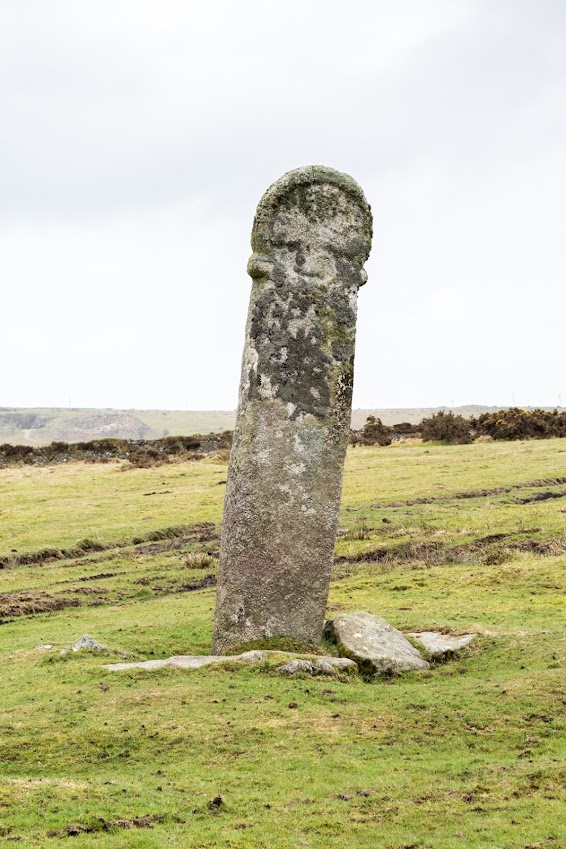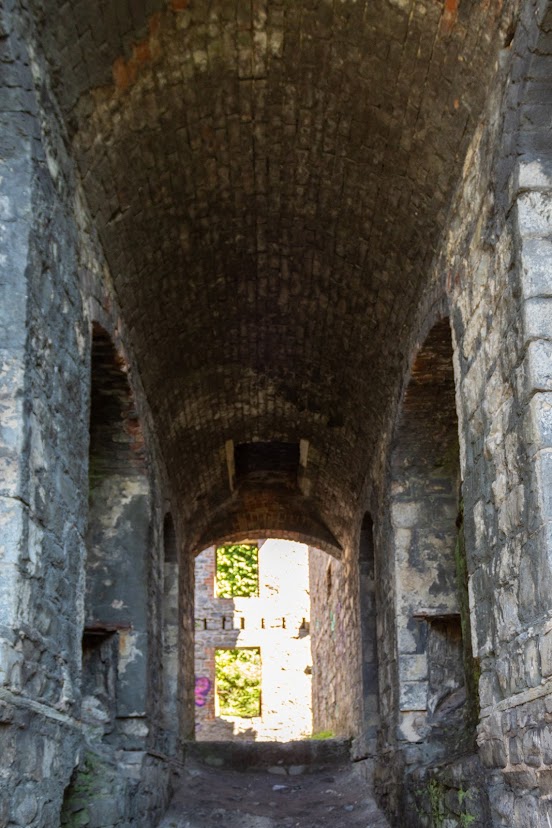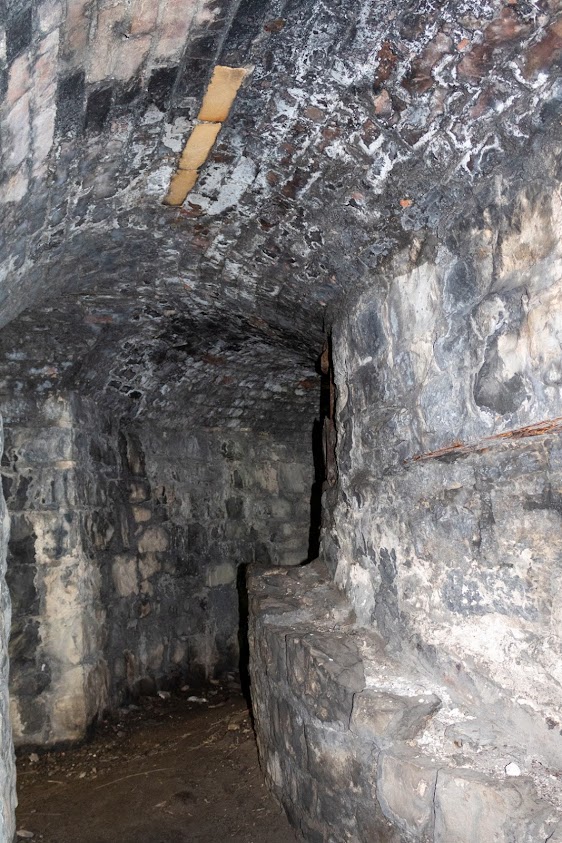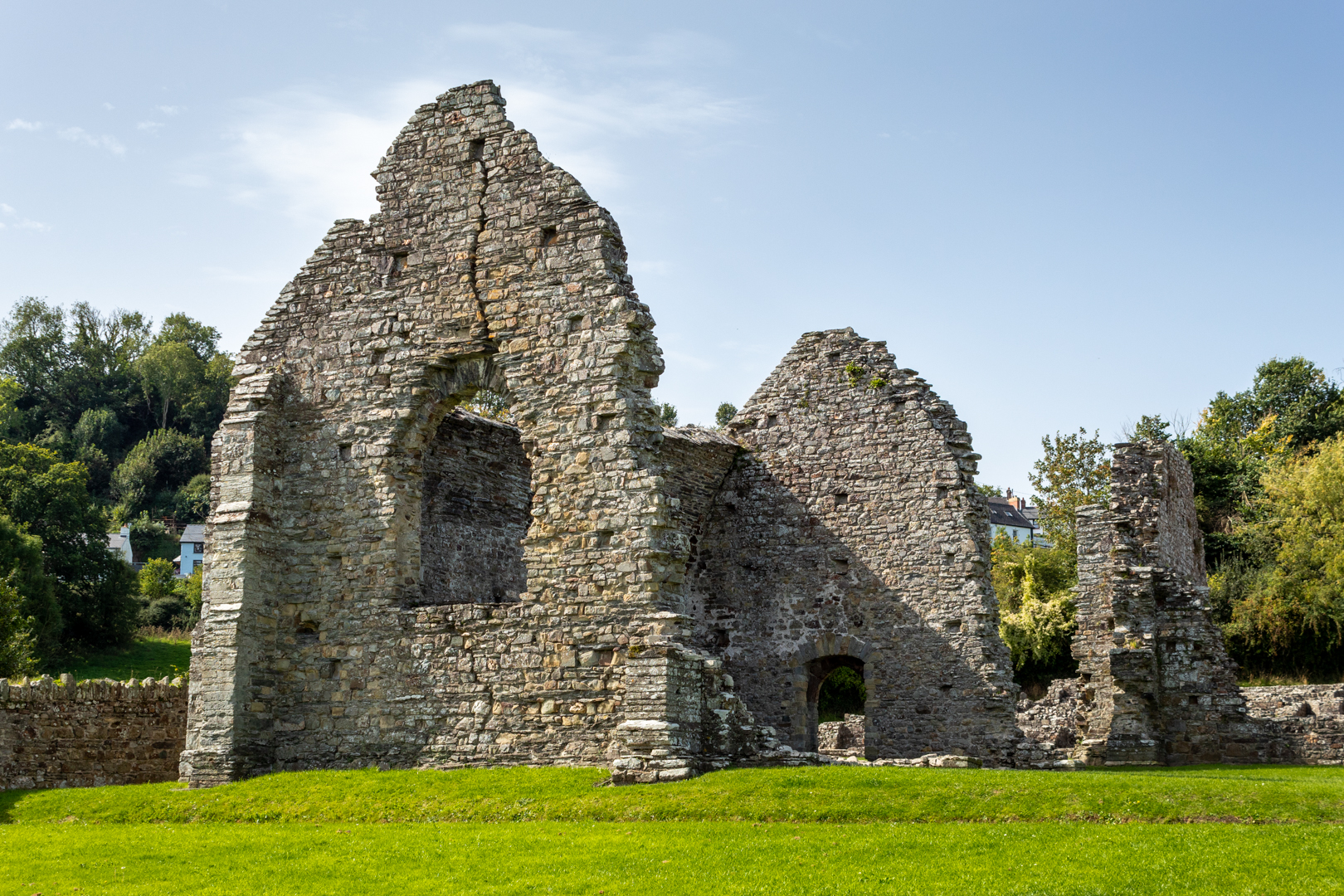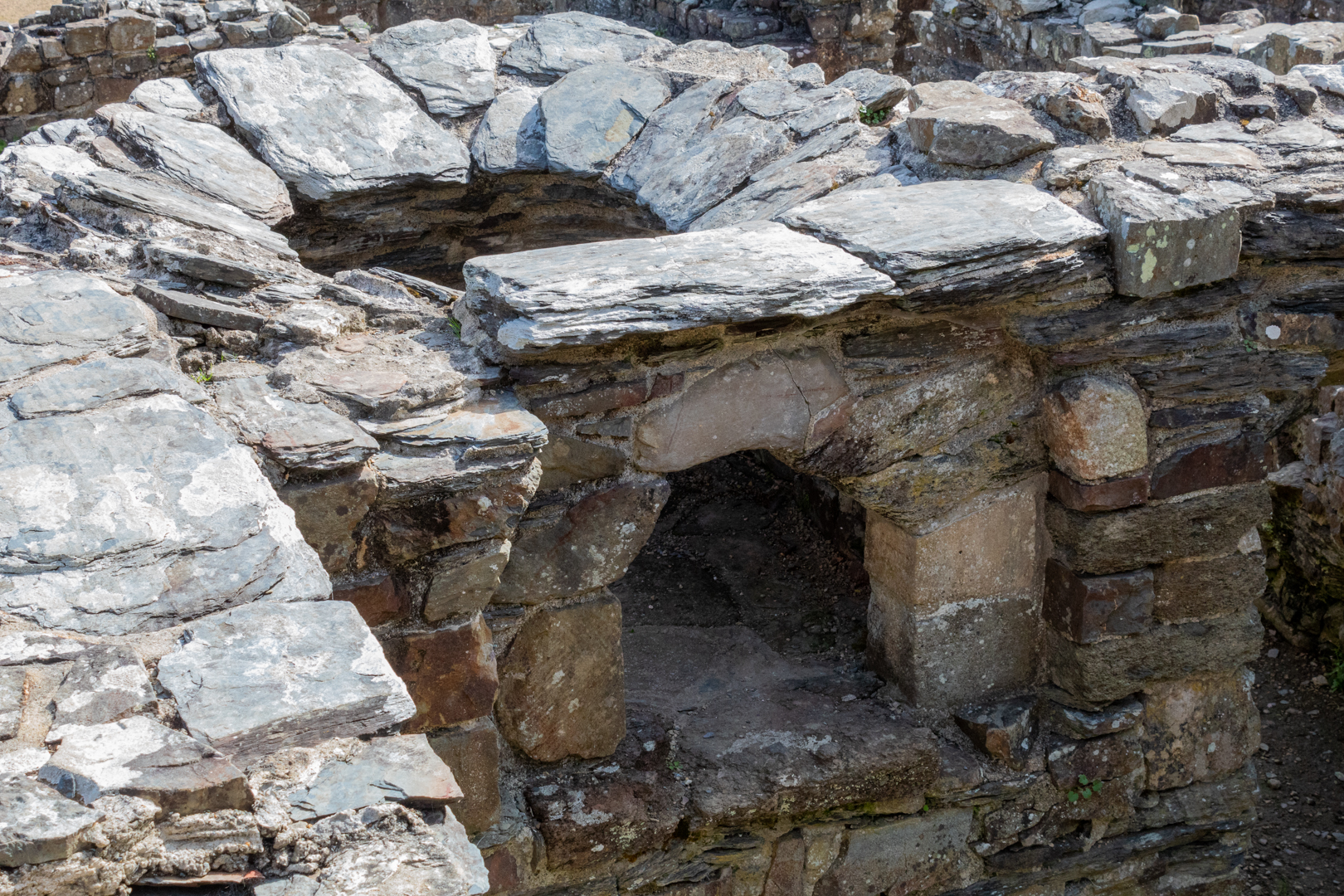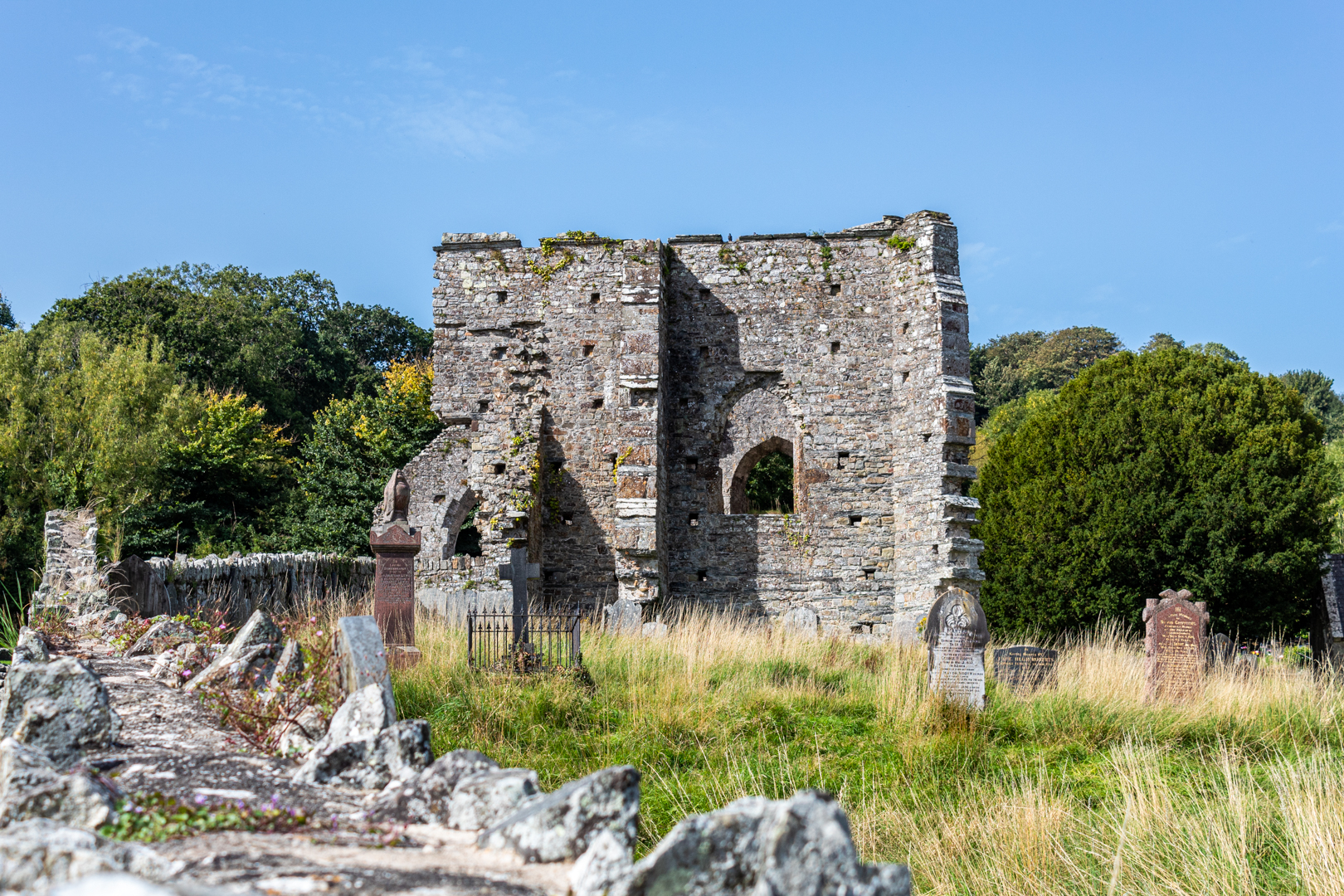Commonly known as "Long Tom" this stick of granite stands more than 2.5 metres (9 feet) high.
Taking the form of a deliberately shaped standing stone, the top quarter is marked with a carved Greek cross.
As is common with these early Christian crosses, it is likely to have been added to a much earlier standing stone after Christianity took hold in the area.
Visit Date March 2024
 |
| The Longstone Cross (Long Tom) Cornwall |
Situated on Bodmin Moor before being inscribed with the cross, Long Tom is almost certainly part of a landscape of prehistoric landmarks.
It would seem to be aligned with the three ancient circles of the nearby "Hurlers".
Regarding the carving of the cross, it was common for the early Christians to carve crosses on existing ritual sites and for the site to have been adopted for Christian rituals.
It is difficult often to age these stones but the carved Long Tom is thought to be at least 600 years old and possibly much older and pre-carved standing Menhir is prehistoric.
These crosses are quite common on Bodmin Moor with at least 35 having been found and 21 of these listed as wayside crosses. Long Tom is one of the best preserved and although many of the crosses may have been moved from their original position this is not thought to be the case with Long Tom which seems to be in its original place.
The carving on these wayside crosses found in Cornwall tend to be modeled like churchyard crosses which are often made from a single stone with a rounded wheel head with a cross carving.
 |
| The Longstone Cross (Long Tom) North Face |
In Cornwall, such wayside crosses tended to be modeled after churchyard crosses or market crosses. Most were made from a single slab of stone topped by a rounded wheel head carved with religious figures.
Wayside crosses served a dual purpose. While they were a gathering place for Christian preaching, they also served as way-markers or signposts in a landscape that could be difficult to navigate.
The cross head is decorated with an incised carving of a cross on the north and south faces. The south face is much better preserved.
Footer:Visit Information: -
Google Reference: -
50.508796877158495, -4.461704999304393
What Three Words reference: -
///opens.assemble.bloomers
OS Details: -
SX 25546 70560 Altitude:1016 ft
Additional information.
Visiting is very easy and parking is a small lay by on the side of the road which was completely flooded on my visit.
Long Tom can easily be seen from the road on approach.
The road is much better when approaching from the south.
On the A38 you can turn off at Doublebois and head for St Cleer / Common moor and Minions. The site is around 5 miles from here.
A full list of blogs can be found at my website
